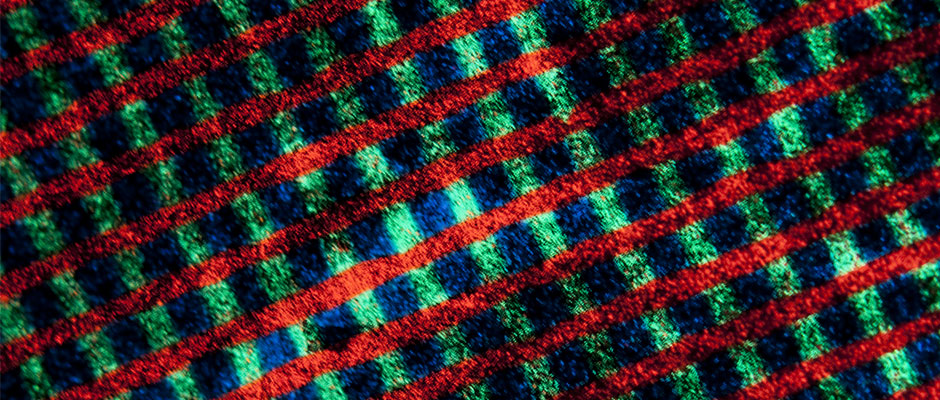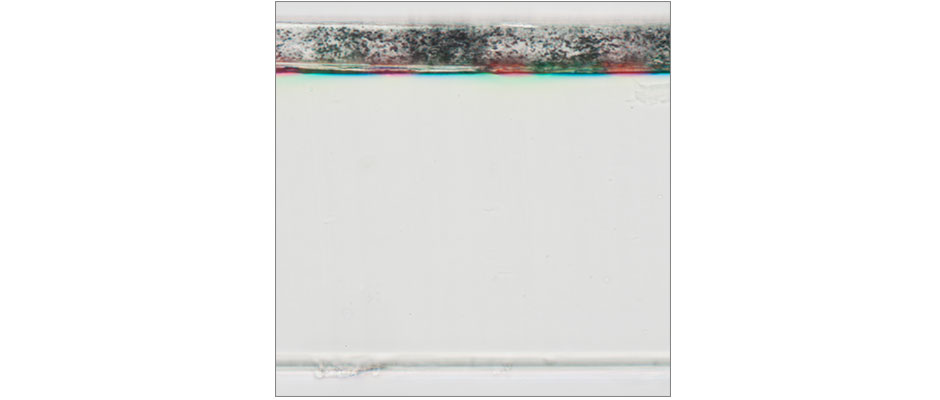


35mm reversal positive on cellulose acetate support.

Magnification reveals the colored mosaic pattern.

The three-colored reseau is directly under the black-and-white emulsion.
Process DescriptionDerived from an early color photographic process for still images, Dufaycolor was available for motion picture use in the United Kingdom from 1933. An additive color process, Dufaycolor required no additional optical devices to reveal a color image. A microscopic, three-color mosaic screen, or reseau, imprinted and dyed onto the base, filtered light onto a black-and-white emulsion. Although it achieved reasonably good color results, the projected image was dim and the mosaic pattern remained visible. Although a negative-positive system was developed for professional 35mm production, Dufaycolor was only used for few feature-length films. By the early 1950s, Dufaycolor was defunct for motion picture applications. ’ |
|